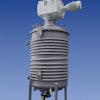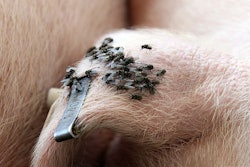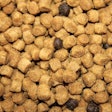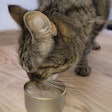Editor's note: This column originally appeared in the November 2006 issue of Petfood Industry.
Onions, garlic and their close cousins – chives, shallots and leeks – have been documented as food and medicine for well over 5,000 years. They have been cultivated, worshipped, valued as currency and used to ward off evil spirits from the time of the early Egyptians to the present day. The aroma and seasoning ability of these bulbous herbs are substantial and unmistakable; but their use in early human diets may have as much to do with their ease of growth, water content, storage capacity and preservation properties as do their taste.
Numerous benefits for humans and pets alike
These herbs have been associated with a number of health benefits including cholesterol lowering, anti-hypertensive, anti-thrombotic, anti-neoplastic and anti-infective (Tattelman, 2005). Each contains a number of nutritionally relevant compounds such as fructans, organic minerals, flavanoids, B vitamins and hundreds of organo-sulfur compounds. Extracts from both onions and garlic have been shown to have anti-bacterial and anti-fungal properties. With so many positives, it seems natural that pet owners and well-intentioned pet food companies would want to include them in the diet of dogs or cats.
There are thousands of research papers published on the merits of garlic and onions in the human diet. The press is rife with reports regarding their health benefits, especially for garlic. Thus, the rationale for incorporating these herbs into pet diets is very compelling, especially considering how “label friendly” they can be to the pet food purchaser. In addition, onions and garlic have been a part of companion animal diets for as long as dogs and cats have been associated with people via table scraps and leftovers.
Use in pet food adds palatability
Several pet food companies use onion flavor or onion powder in their products and actively promote them. Further, a number of pet food companies incorporate garlic into their formulas, more frequently in dog foods than cat foods. These are established and mainstream pet food companies that have conducted feeding trials to substantiate these foods.
More often onion flavor can be found in treats and jerkies. Most likely it is added to improve palatability for the dog and possibly as an aroma mask for both pet and owner. Garlic is often added to dog foods as a flavoring agent, but its utility for this purpose is most likely more about perception than enhancing palatability, as a greater increase in palatability can be achieved with a similar amount of fat or meat ingredients. Garlic is also a common ingredient in dog and cat supplements.
For pet food applications, onions and garlic can be sourced through the market for human food ingredients, as few feed ingredient brokers carry them. For those with the capacity to utilize them in the raw form, onion bulbs and garlic cloves are available. They can also be found as a puree, dried bits, powder or a flavored salt. Oil extracts, especially for garlic, are available. Aged garlic extract appears to be a popular form.
But wait, are there problems ahead?
However, in large enough quantities, both of these ingredients can create problems for dogs and/or for cats specifically, onions and/or garlic can lead to anemia and ultimately death. Reports of onion-associated anemia in dogs and cats started as early as the 1930s. In the 1980s, it was discovered that onions and garlic in various forms could lead to (reversible) hemolytic anemia in dogs and cats.
This onion- and/or garlic-induced anemia is brought about by specific oxidizing sulfur compounds overwhelming the antioxidant capacity of the red blood cells (Hu et al., 2002; Yamato et al., 2003). Oxidative damage to the red blood cell ultimately limits the oxygen transport capability of the blood. Unlike humans, the dog has weak antioxidant activity at the red blood cell membrane, and the hemoglobin of the cat is more susceptible to oxidative damage than is that of other species (Cope, 2005). Thus, the reason dogs and cats react negatively relative to their human counterparts is that they are simply more sensitive. Unfortunately, supplementation with antioxidants does not overcome these oxidizing effects (Hill et al., 2001).
All forms of onions have been implicated: raw, cooked, dried, pureed, etc. Dosages of 5 g/kg body weight for cats or 15-30 g/kg body weight for dogs have been reported to result in clinically important hematologic changes and “toxicosis” at consumption of more than 0.5% of body weight (Cope, 2005). There is also a genetic component to the response as certain breeds of dog, such as the Japanese breeds, are more susceptible (Yamato et al., 1998).
Fewer reports exist on the ill effects of garlic or its “toxic” dose. But of the few, one noted that garlic (boiled-dehydrated) at a dose equivalent to 5 g/kg body weight led to the appearance of damaged red blood cells, but did not develop into hemolytic anemia (Lee et al., 2000). Unlike onions, form may significantly affect these results as aged garlic extract supposedly acts more like an antioxidant in opposition to raw or boiled garlic, which may stimulate oxidation (Amagasse et al., 2001). Aged garlic extract was also reported to be milder to canine stomach mucosa than boiled dehydrated or raw garlic (Hoshino et al., 2001), which has been noted to lead to ulcers.
While there are many well-intentioned lists that state unequivocally that onions and garlic are toxins, the evidence at hand would suggest that these may be a bit too black and white. It does appear from the literature that onion is a problem for cats at most doses (Robertson et al., 1998); but similar data regarding garlic ingestion by cats is missing. For dogs, small amounts of onion may be fine, and for garlic it may be a matter of finding the right form. It would be helpful if more research regarding onions and garlic was conducted at dosages practical for pet foods.
More Ingredient Issues columns
https://www.petfoodindustry.com/authors/1-greg-aldrich-phd
Briefly: top 5 takeaways
- Onions, garlic and similar herbs have been documented as food and medicine for more than 5,000 years, especially for humans.
- These herbs have been associated with a number of health benefits including cholesterol lowering, anti-hypertensive, anti-thrombotic, anti-neoplastic, anti-infective, anti-bacterial and anti-fungal.
- For dogs and cats, onion and garlics can add flavor and palatability to their pet food diets.
- At higher doses – 5 g/kg body weight for cats or 15-30 g/kg body weight for dogs or above – onions can cause anemia.
- With garlic, low levels and the right form may be fine for dogs; similar data regarding garlic ingestion by cats is missing.


















